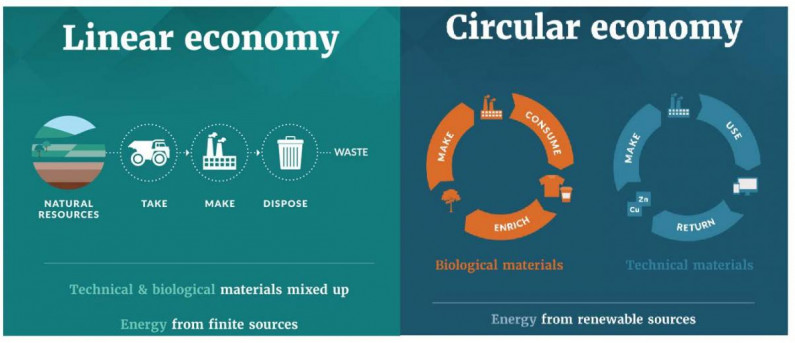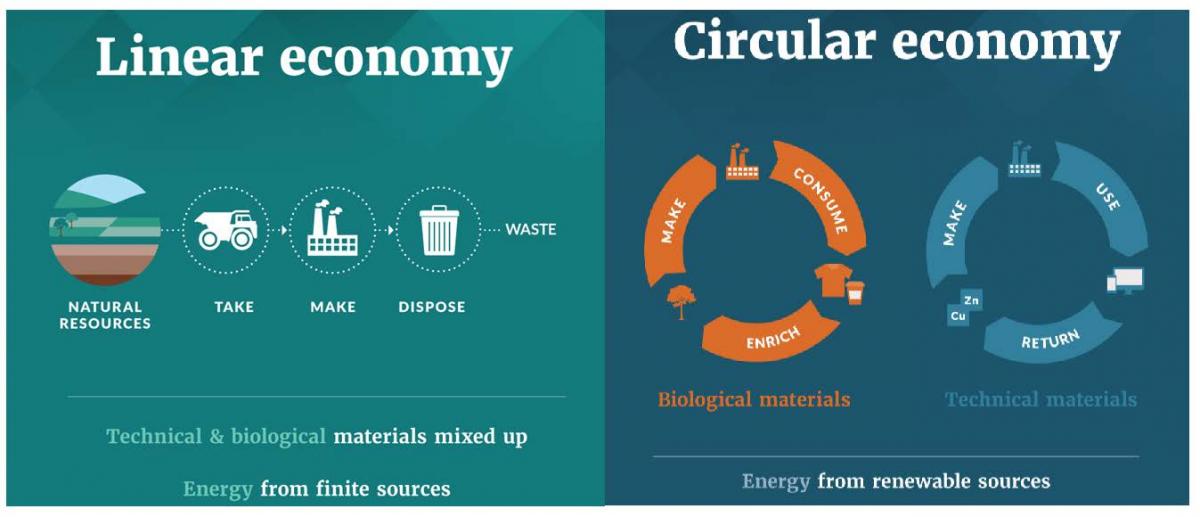Ōhanga āmiomio - Circular economy
The essential concept at the heart of the circular economy is to 'ensure we can unmake everything we make'.
The essential concept at the heart of the circular economy is to 'ensure we can unmake everything we make'.
A circular economy is based on the following three principles:

Image: The Ellen MacArthur Foundation
The products we use for all aspects of life are often designed and manufactured with little thought for the resources consumed in making them or what happens to them at the end of their life. Apart from the most expensive purchases we make, like a car or house, when something breaks in our modern world it is often more expensive to repair than to buy a new one, and usually it goes to the landfill. Simply put, these products are not designed for reuse, repair, refurbishment or to be remanufactured. This take-make-dispose mind-set has created a linear economy.
A circular economy is an alternative to the traditional linear economy in which we keep resources in use for as long as possible, extract the maximum value from them whilst in use, then recover and regenerate products and materials at the end of each service life.
When a product is designed for the longest use possible, and can be easily repaired, remanufactured or recycled (or used, composted and nutrients returned) we consider it to have a circular life cycle.
A circular economy is fueled by renewable energy (eg solar, hydro, wind and tidal power, and biofuels).


Growing international research and evidence shows numerous benefits over the traditional linear economy.
These include:
When a product’s component materials are reused rather than put in a landfill, not only is that material no longer waste but new raw materials are not required to be extracted.
Key findings from the forthcoming OECD report Global Material Resources Outlook to 2060: Economic Drivers and Environmental Consequences [OECD website].
"Today’s economy is massively wasteful. Most of the materials we use, we lose, the things we make are consistently under-utilised, and our efforts to fix it treat the symptoms, not the cause."